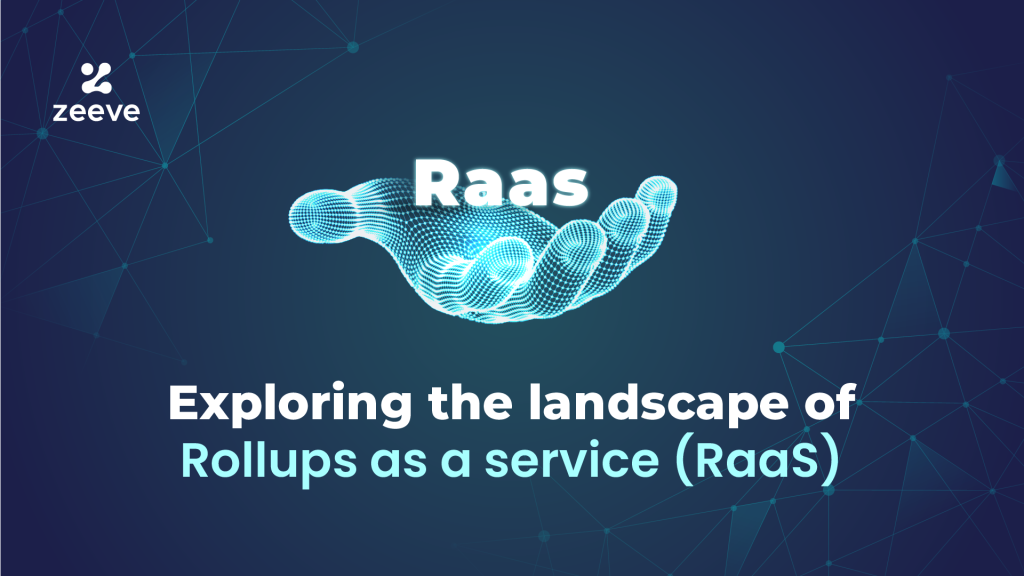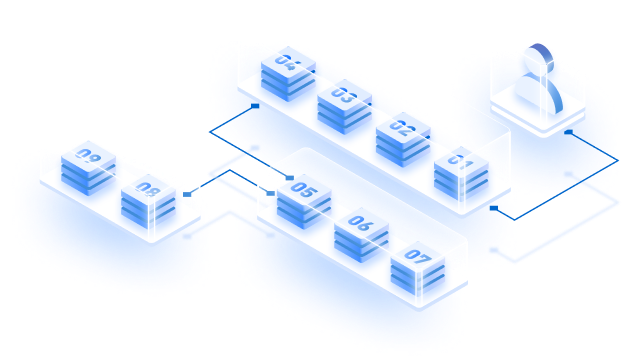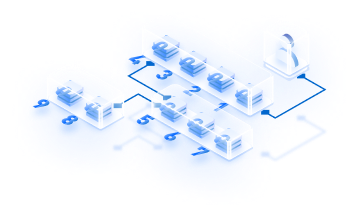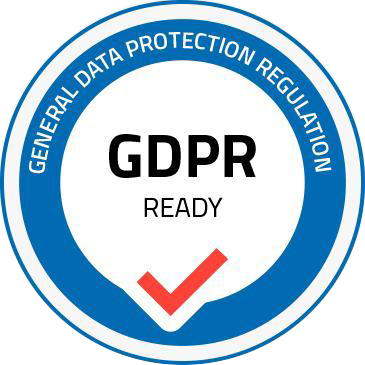Rollups-as-a-Service (RaaS) has quickly evolved from an emerging trend in 2023 to a key pillar of modular blockchain infrastructure in 2025. As rollup adoption becomes mainstream, RaaS platforms are empowering Web3 teams to launch Layer-2 and Layer-3 chains without dealing with complex infrastructure or deep protocol engineering.
With the scalability bottlenecks of Layer-1s still limiting real-world dApp adoption, RaaS offers an easy path to deploy production-ready rollups that are cost-effective, customizable, and performance-oriented. Whether you’re building on OP Stack, Arbitrum Orbit, zkSync Elastic Chains, or Polygon CDK—RaaS makes it all accessible in a few clicks with dozens of integrations a request away.
So, let’s explore once again what Rollups-as-a-Service really means in today’s context—and how it’s broadening the access for a scalable Web3 infrastructure.
What Are Rollups and Why Do They Matter for Blockchain Scalability?
To understand Rollups, you must understand the concept of Layer-1 and Layer-2 blockchains and AppChains. So, if you want to learn about these concepts, this article covers them briefly:
Comprehensive Guide on Layer 2, Sidechains, and AppChains
Now, let’s come back to rollups.
Rollups are the innovative Layer2 scaling solution designed to tackle the scalability issues of Layer1 blockchain networks, which guarantees a faster, cheaper, and highly sustainable blockchain ecosystem for dApps. And that’s still true in 2025.
rollups are the ideal infra for building apps https://t.co/oEt9vxM99E
— James (@jimmyboolish) June 10, 2025
Rollups work by processing the bulk of blockchain transactions on a separate, faster network (Layer-2s), bundling the transactions into a single rollup, and then porting the bundled transactions back on the main blockchain (Layer-1) at a minimal gas fee cost.
This approach of computing transactions off-chain could be beneficial for a lot of Web3 applications in many ways. For example, it increases the transaction throughput capacity of the parent chain and provides a more economical and sustainable ecosystem for dApp development while maintaining a high degree of security and full decentralization on Layer-2 by inheriting the security from the main Layer-1 chain.
Polygon CDK, OP Stack, ZkSync ZK Stack, and Arbitrum Orbit are the top rollup frameworks that support the development of custom Ethereum rollup chains. However, you can also deploy your application on a rollup-powered public mainnet such as ZKsync Era or Arbitrum One Mainnet. This is helpful for projects that do not want their own chain for customization and performance.’
Learn More: What are Layer-2 rollup networks? Everything You Need To Know
What is Rollups-as-a-Service (RaaS)?
RAAS: Rollups as a Service.
— binji (@binji_x) November 3, 2022
Deploy a rollup however you wish with full customizability. Want a ZK rollup that uses EigenDA or Celestia as a Data Availability Layer? Want max throughput for your game?
As easy as plugging and playing with APIs in Web2. pic.twitter.com/ZZqefvyFTD
Rollups-as-a-Service (RaaS) is a comprehensive stack that allows web3 enterprises and dApp projects to build, deploy, and maintain their customized, production-grade Rollup chains and AppRollups (application-specific Rollups) in a less complex and hassle-free way; usually within a few clicks.
RaaS provides an abstraction layer over the complex, coding-based approach of launching Rollups using SDKs and frameworks. RaaS works similarly to software-as-a-service products that do not require users to manage complex hardware and software infrastructure for hosting services.
Similarly, rollup-as-a-service platforms eliminate the heavy lifting of building AppRollups from scratch, which mainly includes writing logics, infrastructure management, or scaling the nodes. Instead, RaaS offers a dashboard-like platform with advanced pre-configured components for instant launch of custom Rollups without intensive engineering or gathering technical expertise.
What Are the Different Types of Rollups-as-a-Service (RaaS)?
There are two main types of Rollups-as-a-Service: Optimistic rollups and ZK-Rollups that are widely adopted. Both these Rollups offer unique benefits; hence, enterprises can choose one that aligns perfectly with their project requirements.
1. What Is Optimistic Rollups-as-a-Service and How Does It Work?
Optimistic RaaS refers to the stack that Layer-1, L2, and Appchains use to implement Optimistic Rollup on their blockchain ecosystem. Transactions in the case of Optimistic are processed on a separate Layer-2 network, and then batched transactions are submitted to Ethereum or Layer-1 mainnet, assuming that the transactions are valid. Here, two parties are involved:
- One that submits the rolled-up transaction on the mainnet and
- Another that submits a fraud-proof for those transactions.
Both these parties have their token staked on the main network. If any invalid transactions are spotted, a dispute resolution will be conducted using their tokens. However, the chances of invalid transactions are rare in Optimistic Rollup since it adopts a dual-validation model. Popular optimistic rollup stacks are OP Stack and Arbitrum Orbit.
2. What Is ZK Rollups-as-a-Service and What Makes It Unique?
ZK-Raas refers to a solution that allows the implementation of zkRollups for blockchains and AppChains.
A big reason why ZK rollups became popular in the first place is
- Their ability to move assets between L1 <> L2 without delays. So, no 7D withdrawal window.
- No 3rd parties, no added fees, and no liquidity issues for fast bridging(current zk rollups though have couple hr windows for bridging)
- Everything is secured by cryptographic proofs.
Within this model, the batches of rolled-up transactions include a cryptographic proof called SNARK ( Succinct Non-Interactive Argument of Knowledge ), which is undertaken and verified by a contract deployed on the main L1 blockchain. This means that a validity proof of transactions must be submitted on the main network, making Rollups quicker and more efficient. Prominent zero-knowledge rollup stacks are Polygon CDK, StarkNet, and zkSync ZK Stack.
Learn More: zkRollups-as-a-service: Simplifying launch of zero-knowledge Rollups
How Does Rollups-as-a-Service or RaaS Platform Work?
RaaS platforms offer a complete set of features that allows web3 developers to create and implement custom Rollups in a few simple steps. Following is a simplified overview of how Rollups-as-a-Service typically works:
- Projects onboarding: Web3 projects can quickly sign up with a RaaS platform and gain access to their complete stack of SDKs, templates, and plug-and-play tools.
- Customization: Rollupus-as-a-service platform supports full customization of Rollup chains based on the project’s specific needs. Customization can include adjusting the security parameters, increasing the transaction processing capacity, setting transaction fees, and modifying the performance standards.
- Integration of rollup components: To enable modularity in rollups, RaaS platforms allow for various integrations for data availability (DA )layer, sequencer, settlement layer, etc. Also, you can choose third-party explorers, wallets, account abstraction (AA), and a lot more.
- Monitoring and Maintenance: RaaS platforms also offer monitoring and maintenance services to ensure the optimal performance and reliable security of the Rollup solution.
- Scaling and upgrade: As the project expands, RaaS platforms allow the network p scale for handling higher traffic, process more transactions, and optimize its speed.
Here’s a graphical overview of how RaaS platforms work at a basic level:
How Can Web3 Projects Use Rollups-as-a-Service in 2025?
Web3 projects can leverage RaaS in the following main ways:
1. Application to Layer-1 and Layer-2 Networks
Layer-1 blockchain networks are actively exploring Rollup solutions to improve scalability. These chains can utilize Rollups-as-a-service platforms for the quick launch of their custom rollup chain without the heavy lifting of infrastructure management or setting up the components, such as nodes, wallets, explorers, etc. Similar to Layer-1, Layer-2 blockchains can also use RaaS to build and implement use case-specific rollup chains for higher scalability, performance, and customization.
2. Alternative to Application-specific blockchains
As we know, AppChains or Application-Specific Blockchains are standalone blockchains that manage large dApps in their ecosystem instead of sharing infrastructure with multiple dApps. While AppChains are a great way to achieve scalability, their development requires significant cost, infrastructure management hassle, etc. dApps can instead launch Rollups for their network’s ecosystem using Rollups-as-a-service platforms with access to high-end developer tools, plugins, and ready-to-use frameworks. However, web3 projects should do a detailed analysis of whether they need Rollups or an AppChain ecosystem. The comparison can be done on various parameters such as TPS, decentralization, interoperability requirements, customization, and cost-effectiveness.
3. Rollups implementation for existing web3 projects
High-traction gaming and non-fungible token (NFT) projects that manage millions of active users may face scalability issues due to increasing network congestion and huge transaction processing. These projects can launch custom rollup chains and migrate from their existing infrastructure, achieving high transaction speed, congestion-free environment, and highly secure infrastructure. Again, launching Rollups-based chains becomes easy for NFT and gaming web3 projects with Rollups-as-a-service platforms with ready-to-use stack, tools, and Rollups SDKs.
Why Should You Launch Your Rollup Chain Using Zeeve’s RaaS Platform?
Zeeve’s Rollups-as-a-service or RaaS solution takes away the pain of launching custom Layer2 and Layer3 chains through its low-code deployment sandbox tool for all the leading rollup frameworks: Polygon CDK, ZkSync Elastic Chains, Arbitrum Orbit, and OP Stack. With Zeeve RaaS, you get access to all the important rollup components such as scalable nodes, RPCs, data Indexers, block explorers, testnet faucets, cross-chain bridges, and faucets. On top of that, you will get 30+ third-party integrations to make your rollups truly modular.
Also, Zeeve monitors your Rollup chains, maintaining 99.99% uptime, excellent network performance, and scalability. For this, Zeeve offers a real-time dashboard showing insights like uptime, disk usage, storage running out, current block height, etc. Further, the reliability of your rollups is guaranteed with ISO 27001 and SOC 2 Type 2 compliance and enterprise-level SLA.
If you are planning to launch a Layer2 chain or you want to migrate your network to a rollup-based ecosystem, contact us. We will handle all your queries and provide consultation on your project. Send us an email or schedule a call for a detailed discussion.





